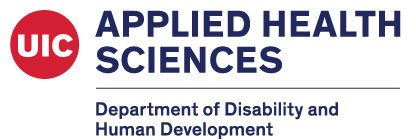by Alicia LaRouech
CW: discussion of explicit language, brief mention of abuse and sexual assault
Image description: An augmentative and alternative communication (AAC) device in the form of an iPad with a blue case. The device screen contains 60 buttons, all of which contain a word and/or a picture symbol, such as go, play, on, off, etc.
Image from PRC-Saltillo.
As a pediatric speech-language pathologist (SLP), I spend a lot of time thinking about how to teach kids language. I also spend a lot of time listening to kids, especially when they say the most creative, funny, and insightful comments…including calling each other “poopyheads” or some variation of the term. When thinking about kids who use augmentative and alternative communication (AAC), it’s incredibly important to know how to support all sorts of opportunities for communication with family, friends, and others in the community, as well as consider what specific language they may like to access for those conversations.
Customizing an AAC user’s device to include slang, “bad” words, and other meaningful selections can make a world of difference in a child’s buy-in of the device and allow them to communicate with their peers in a more authentic way. Providing kids, teens, and young adults with access to words such as “dab,” “rizz,” or, as one client of mine liked to exclaim, “yucky!” allows another outlet of self-expression. These are words they hear their peers use throughout the day and that hold socially-meaningful value within peer interactions. In addition to core words–those salient words that are used everyday across a variety of environments, such as “go,” “on,” and “more”–it’s important to model other communicative functions, including exclamations, social comments, and rejections, among so many others. I once had a student who loved selecting “oops” after stacking and knocking over blocks, and we would giggle over “uh oh!” when the bucket was empty.
In addition to adding a sense of playfulness and connection for AAC users, there is a very serious side to providing individuals with access to more taboo or sensitive subjects. The Northwest Augmentative Communication Society notes that children with disabilities are often not provided with opportunities to learn about consent, setting boundaries, sexual and romantic involvements, or even their own body. An appropriate and tactful approach can certainly be provided on these topics for AAC users, but the bottom line is they need to have access to these words and concepts on their devices. Abuse, sexual assault, and ableism are very real and, unfortunately, too-frequent occurrences for people with disabilities. How do we expect individuals with disabilities to share their experiences of what is happening to them if they are not provided the words to accurately describe it? Some AAC applications have pagesets containing icons for genitals, phrases about safety and sexuality, and additional resources regarding these topics, while other applications are lacking in this area.
Of course, there are no hard and fast rules regarding when, where, or how it’s appropriate to add slang, profanity, etc. Some important considerations include cultural and familial boundaries, age, clinician bias on what “appropriate” even means, and not conflating terminology from other dialects or cultures as slang. Overall, one of the biggest takeaways is that AAC is meant to grow with an individual and support them in all areas of life. AAC users deserve access to whatever language is best for them to make jokes, express wants and needs, protest, complain, and generally just communicate across all situations. After all, who are we to deny someone the opportunity to exclaim “fuck!” after stubbing their toe or burning their food?
References:
Cox, L., Ingles, M., & Wylie, K. (2024). Guys, like…yeah…this stuff might actually be pretty important. Teenage vocabulary in peer interactions. Implications for teen AAC users. Journal of Clinical Practice in Speech-Language Pathology, 26(1), 42-57. https://doi.org/10.1080/22000259.2024.2317470
Hartmann, A. (n.d.). Core word teaching strategies. AssistiveWare. https://www.assistiveware.com/learn-aac/learn-about-core-word-teaching-strategies
Northwest Augmentative Communication Society. (n.d.). AAC & Consent, Safety, and Dignity. https://nwacs.info/aac-and-consent-safety-dignity
Strickler, H. (2022, April 27). Uncensored AAC: Exploring AAC access to profanity and slang [PowerPoint presentation]. The USSAAC Webinar Series. https://isaac-online.org/wp-content/uploads/USSAAC-Webinar-April-27-2022-1.pdf








